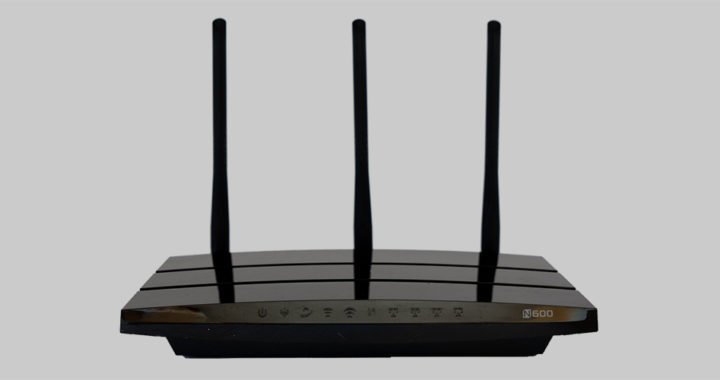Multi-user MIMO represents a set of specific multiple-input and multiple-output or MIMO technologies used for multipath wireless communication. For starters, note that MIMO is a general antenna technology that involves using multiple transmitting and receiving antennas to multiply the capacity of an equipment or device to send and receive signals, thus allowing the transmission of more data at the same time.
There are two sets of MIMO technologies: multi-antenna or single-user MIMO, also known as SU-MIMO, and multi-user MIMO or MU-MIMO. Compared to a SU-MIMO, MU-MIMO allows an equipment or access point such as a wireless local area network router or the base station of a cellular network to send and receive multiple data streams simultaneously, thereby improving network performance through faster data transmission speeds and reduction of interferences.
Pros: Advantages of Multi-User MIMO
A single-user MIMO cannot send and receive multiple data streams to and from different targets and sources at the same time. Simply put, a SU-MIMO access point sends and receives electromagnetic signals successively instead of simultaneously.
Note that single-user MIMO technology also allows multiple connections but only with one device at a time. In other words, there are minute interruptions in connection because each device needs to wait for its turn to communicate to an access point.
Connecting more devices to a SU-MIMO-enabled router or base station results in network congestion, particularly during high downstream and upstream applications such as video streaming and online gaming.
On the other hand, a MU-MIMO equipment or device can send and receive signals to and from different targets and sources at once. Hence, the primary advantage of multi-user MIMO is that it enables true multi-user wireless communication capability.
The following are the specific advantages or benefits:
• Allows true multi-user wireless communication by enabling end-user devices to connect and communicate to an access point at the same time compared to the single-user MIMO which technically works on a first-come, first-serve basis
• Reduces network lags and buffering while maximizing potential data transmission speed by breaking up or dividing the network bandwidth and pushing it to the connected devices, thus supporting high downstream applications
• Complements a signal processing technique called beamforming that involves focusing and directing electromagnetic signals toward a target area or specific user to extend signal range, improve data transmission speed, and reduce frequency interference
• Helps in reducing bit error rate or BER through the application of advanced signal processing algorithms aimed at improving signal quality, expanding range or reach, and optimizing data transmission routes
• Supports other MIMO technologies to include cooperative MIMO or net-MIMO that involves using distributed antennas from other network routers or base stations and end-user devices to improve network performance further
The aforesaid advantages of MU-MIMO are apparent in equipped Wi-Fi routers based on 802.11c wave 2 wireless standard and onwards. A particular multi-user MIMO router essentially works as if each device connected to it has its own separate router, thus resulting in improvements in data transmission speed and local network latency.
Another application of MU-MIMO technology is in the implementation of advanced cellular network technologies. The 3rd Generation Partnership Project has included this technology in standardizing 4G systems, including LTE and LTE Advanced, and 5G technologies, particularly in deploying base stations equipped with massive MIMO capabilities.
It is also worth that one of the advantages of 5G cellular network technology comes from using multi-user MIMO. For example, in mmWave 5G networks, this specific antenna technology helps in optimizing the use of frequency within a very limited area to lessen network interference and congestion, while also improving the experience of end-users.
Cons: Disadvantages of Multi-User MIMO
The primary disadvantage of MU-MIMO centers on the fact that it enables true multi-user wireless communication at the cost of more complicated and expensive signal processing. Compared to single-user MIMO, the working principle and specific underlying technologies behind multi-user MIMO is more complex.
Below are the specific drawbacks and limitations:
• Of course, the cost of implementing this technology translates further to the higher cost of deploying cellular networks and local area networks. For examples, Wi-Fi routers with MU-MIMO feature is more expensive compared to SU-MIMO routers.
• The hardware resources of a particular multi-user MIMO access points increase power requirements. Power consumption primarily stems from processing complex and computationally intensive signal processing algorithms. Base stations and routers would consume more electricity, dissipate more heat, and are more prone to overheating.
• Another drawback of multi-user MIMO is that support for multiple and simultaneous connections is limited. For example, MU-MIMO Wi-Fi routers only support 4 to 6 and 12 simultaneous streams. It is also worth mentioning that devices must also support MU-MIMO technology.
FURTHER READINGS AND REFERENCES
- Schwarz, S., Heath, R. W., Jr, and Rupp, M. 2013. “Single-User MIMO versus Multi-User MIMO in Distributed Antenna Systems with Limited Feedback.” EURASIP Journal on Advances in Signal Processing. 2013(1). DOI: 1186/1687-6180-2013-54
- Spencer, Q. H., Peel, C. B., Swindlehurst, A. L., and Haardt, M. 2004. “An Introduction to the Multi-User MIMO Downlink.” IEEE Communications Magazine. 42(10): 60–67. DOI: 1109/mcom.2004.1341262
- Zada, M., Shah, I. A., & Yoo, H. (2021). “Integration of Sub-6-GHz and mm-Wave Bands With a Large Frequency Ratio for Future 5G MIMO Applications.” IEEE Access. 9: 11241-11251. DOI: 1109/access.2021.3051066

